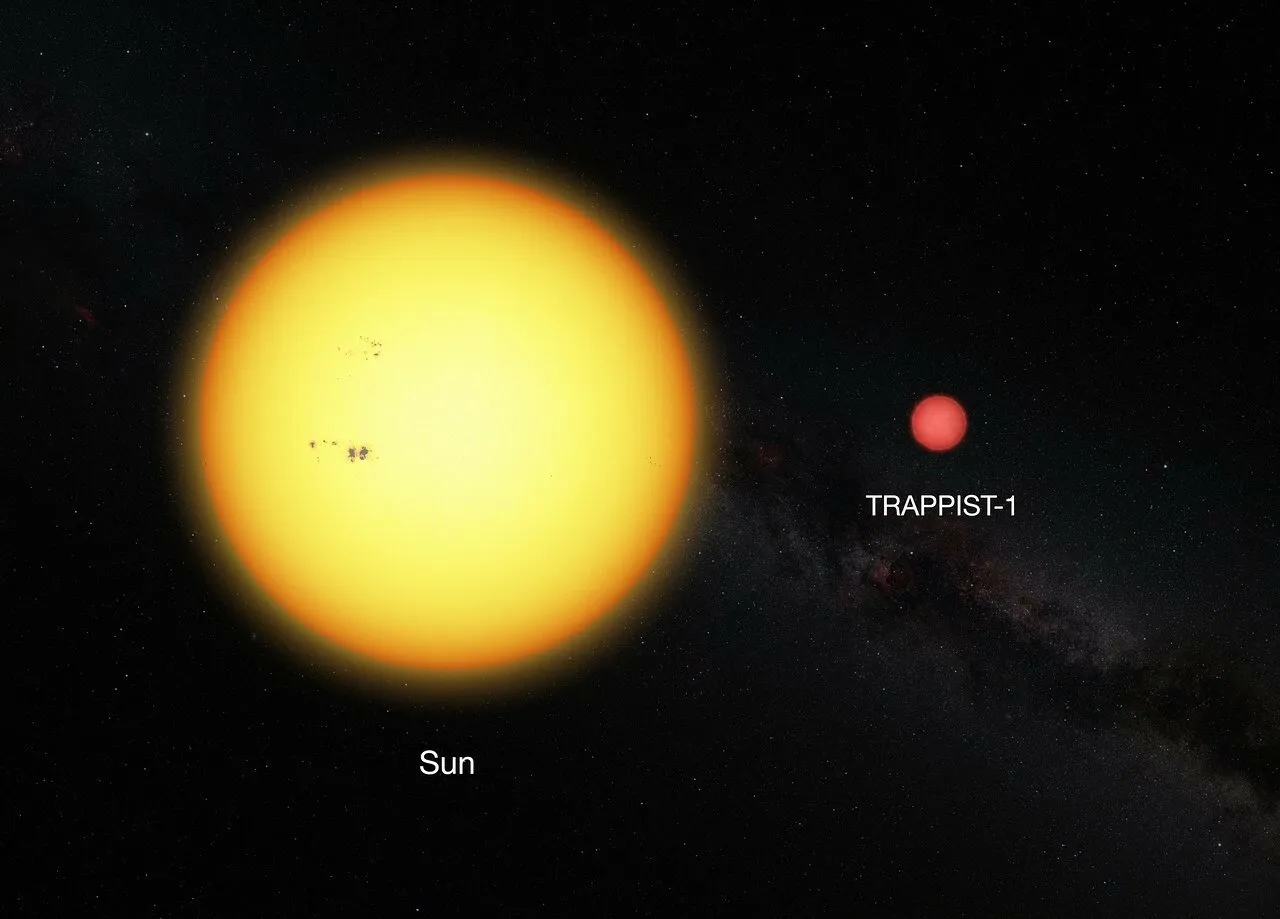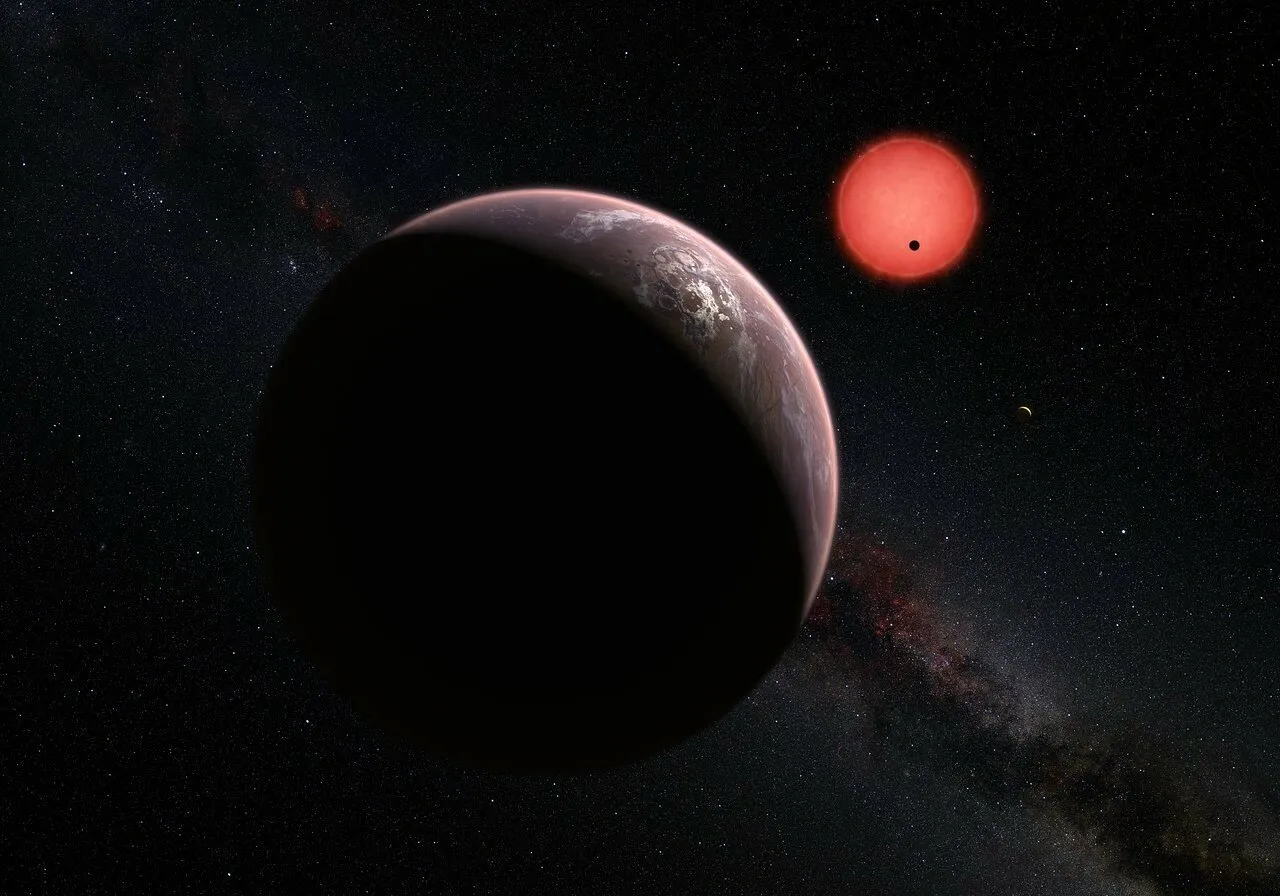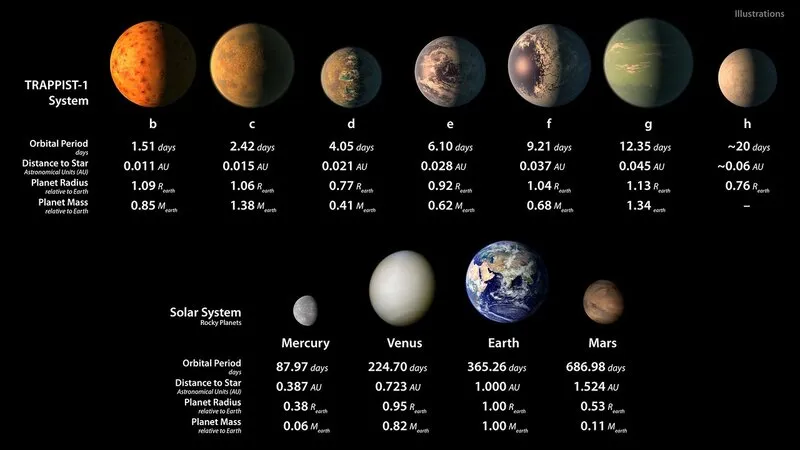NASA will hold a news conference at 1 p.m. EST Wednesday, Feb. 22, to present discovery of four new exoplanets in star system TRAPPIST-1 which is 39,5 light years (12 parsecs) from the Sun, in Aquarius constellation.
TRAPPIST-1 star is cold red dwarf of spectral class M8, its luminosity is only 0,04% of that of the Sun.

Image: Wiki
First of all, three Earth-like planets were discovered at TRAPPIST-1 in 2016. All three have mass close to Earth's, but located much closer to the star: their orbital years are 1,5 days, 2,42 days and 4,5 -73 days. All three planets are tidally locked to its star (it means, that they always look to the star with one side - as our Moon to the Earth). It means that weather conditions on these planets differ vastly, on both sides - one side of each is heated, while other is cold. If there is atmosphere, temperature gradient can lead to permanent hurricanes.

And now four planets more! Of four, three are, most probaly, rocky Earth-like planets, whose orbits are in the range from 0.01 a.u. to 0.1 a.u.
This means that star system consists of 7 planets, and six of them are in potentially habitable zone. Hopefully in Wednesday press-conference we'll get more data about their parameters and configuration - it could be very interesting - orbits of 6 Earth-size planets all are in 18 millions kilometers range, so there are many questions about stability of such system.

Image: NASA
In general, if our Solar System is a toy of adult God, then TRAPPIST-1 system is made for baby-God - so compact it is.
Real dream of sci-fi writer: six worlds of the Red Sun.
NASA briefing about this finding will be carried live on http://www.ustream.tv/NASAJPL2